What is Cross Laminated Timber (CLT)?
- Youtube Views 324,363 VIDEO VIEWS
CROSS LAMINATED TIMBER, or CLT, is an engineered timber product that is threatening to upset the dominance of the big two structural materials: concrete and steel.
Initially driven by the material's sustainable credentials, cross laminated timber buildings are gaining traction, as they can be cheaper, quicker, cleaner and quieter to build than traditional structures. Over the past five years the use of CLT in construction has risen dramatically. The material is now being used to construct spectacular and sustainable homes, offices, schools and towers.
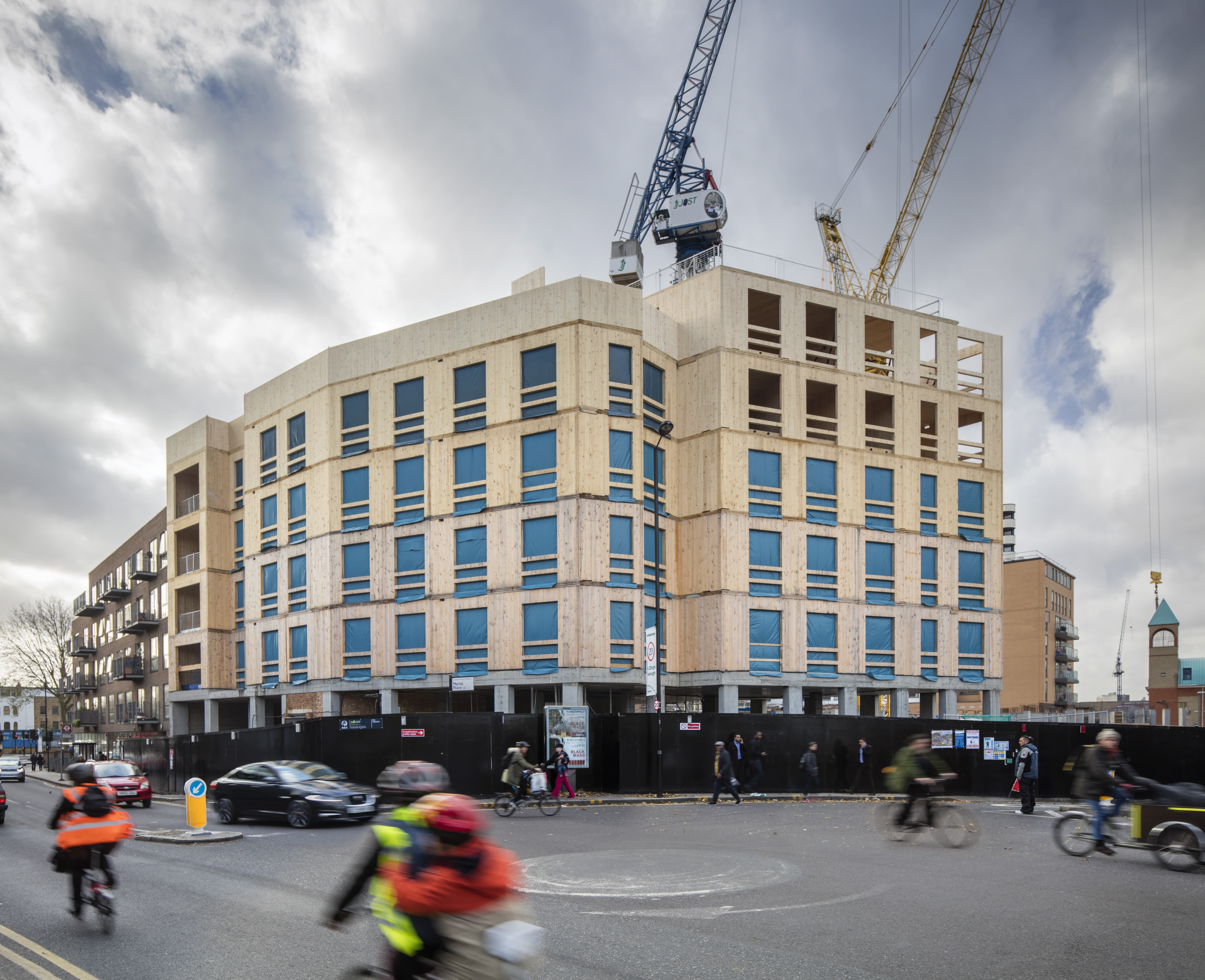
Above: CLT is being used to construct spectacular and sustainable homes (image courtesy of Waugh Thistleton).
Often referred to as "super-plywood", the material is produced in a controlled factory environment from sustainably sourced timber.
CLT is manufactured from Spruce, although Scots pine, larch and Douglas fir can also be used. Once at the factory, the timber is planed and then kiln-dried
to reduce the moisture content.
The conditioned timber is then stacked into layers, know as lamellas, on top of each other. Each layer is placed at a 90 degree angle to the one beneath.
These layers are then glued, using a non-toxic adhesive, and hydraulically pressed together to create the high strength structural panels.
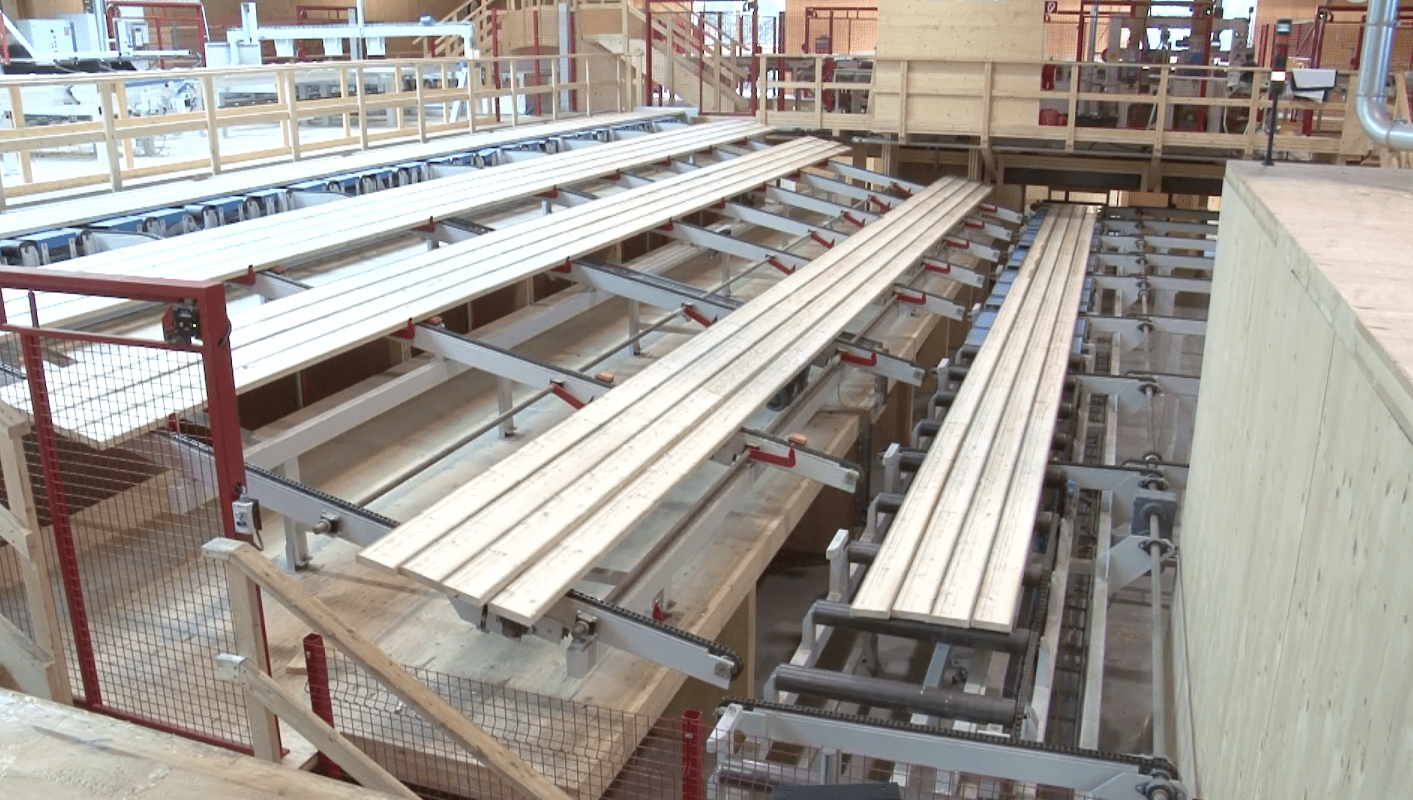
Above: CLT is manufactured in a controlled factory environment (image courtesy of Stora Enso).
Individual panels can in theory be any size. However, their width is limited by the size of the manufacturing machinery, which is usually around 11 feet (or 3.5 metres) wide. The length of a panel is only dictated by how it will be transported to site. While 45 feet (or 13.5 metre) lengths are typical for practical purposes, panels of up to 75 feet (or 22 metres) have been produced.
Using state-of-the-art Computer Numerically Controlled (CNC) joinery machines, almost any shape of panel can be produced, meaning that door and window openings can be pre-cut in the factory. These offsite manufactured panels are then ready to be delivered to site.
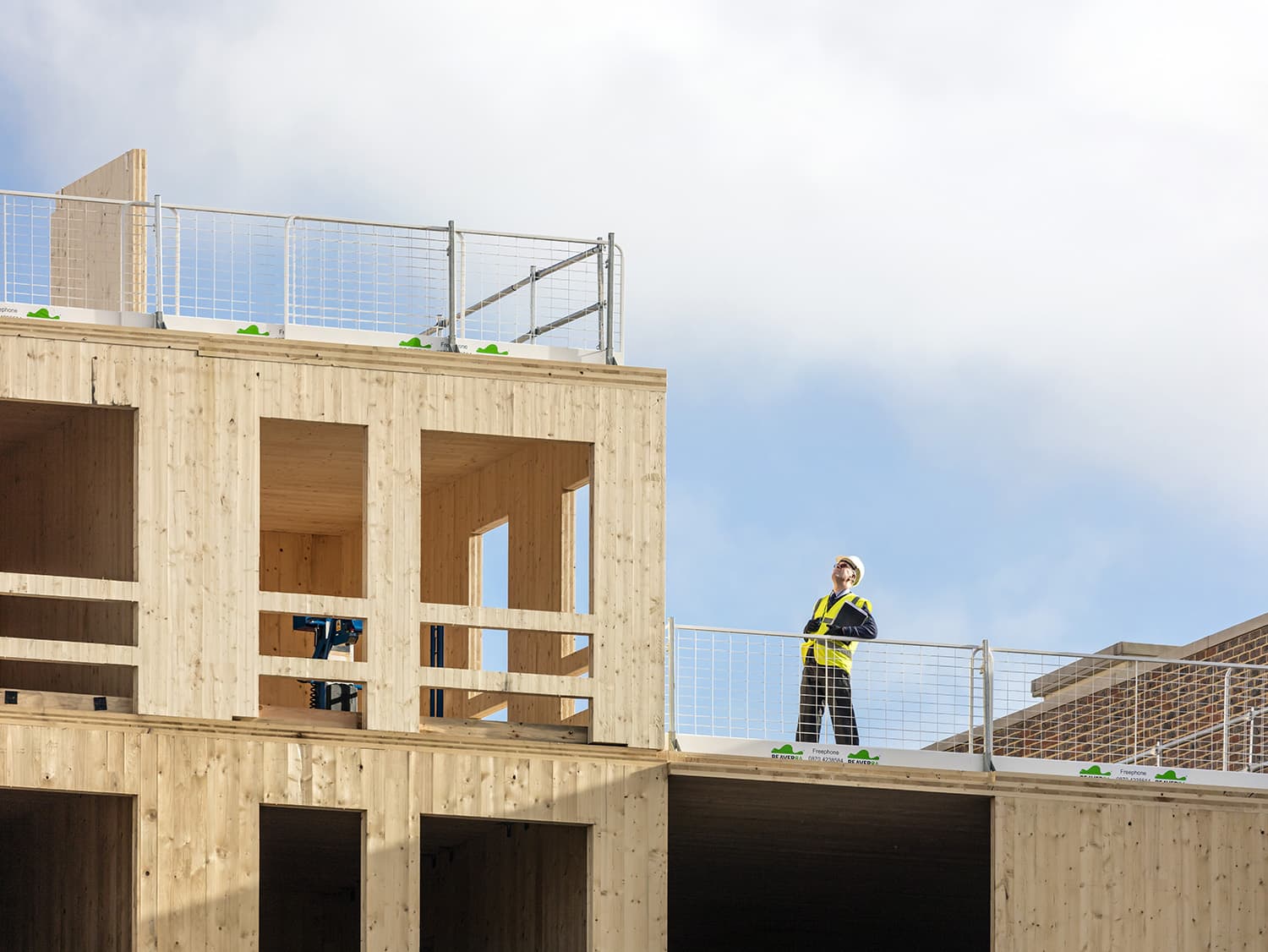
Above: CLT can be quickly assembled on site (image courtesy of Waugh Thistleton ) .
Fabrication is limited to only a handful of factories in mainly alpine countries, such as Stora Enso's,
in Austria. While this may require the panels to be transported to site by road, the embodied energy added to a project, is far outweighed by the carbon
savings.
Proponents of CLT claim that producing timber building components consumes only 50% of the energy required to produce concrete and a mere 1% of that needed to produce steel.
The prefabricated panels can be delivered to site as they are needed, making this construction method ideal for schemes with limited on-site storage capacity. They are then lifted into place, using pre-installed lifting straps, and rapidly assembled, greatly reducing construction time and therefore cost.
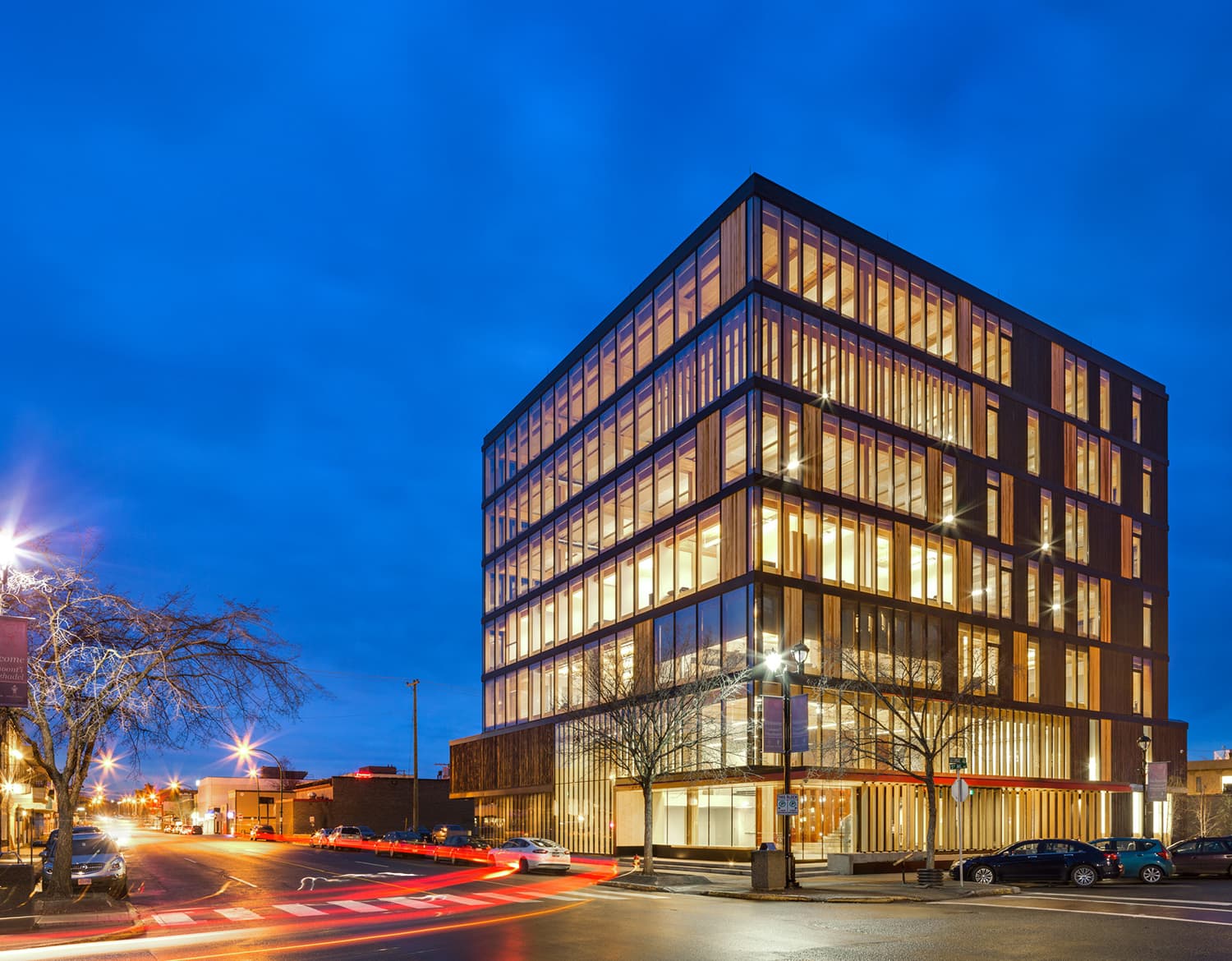
Above: CLT is being increasingly adopted around the world (image courtesy of Ema Peter).
As the timber used is kiln-dried, CLT should not shrink or warp when onsite. However, like most timber elements, CLT must be placed above the damp-proof level and will need protection when used as an external façade. CLT construction also reduces the overall self-weight of a structure, as compared to concrete, potentially reducing groundwork costs.
The construction process is also cleaner than traditional methods, with greatly reduced levels of dust. It is also quieter, a distinct advantage for projects built in urban areas.
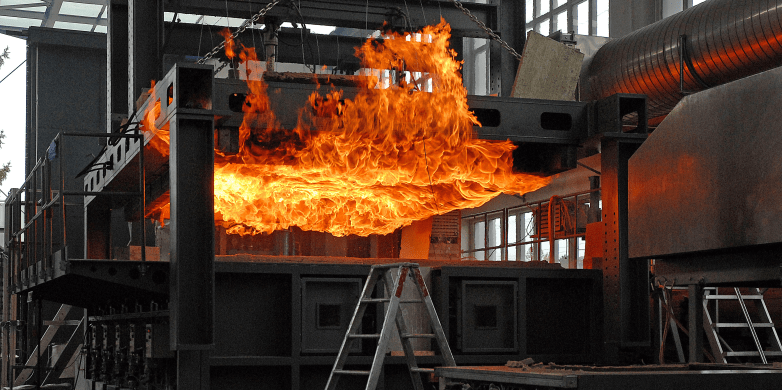
Above: CLT has inherent fire resistance (image courtesy of ETH Zurich).
While there are numerous benefits to CLT, people can be fearful of living, or working, in timber buildings. Some feel such structures possess an inherent
fire risk and are particularly dangerous when formed to ten, 20 or 30 storeys.
Unlike unprotected steel, CLT can remain structurally stable when subjected to high temperatures. When exposed to fire, the outer layer of timber chars
and forms a layer around the structural core, which can retain its load bearing capacity. CLT's inherent fire resistance allows it to comply with the
fire resistance classes – withstanding blazes for between 30 to 120 minutes depending on its engineering and formation.
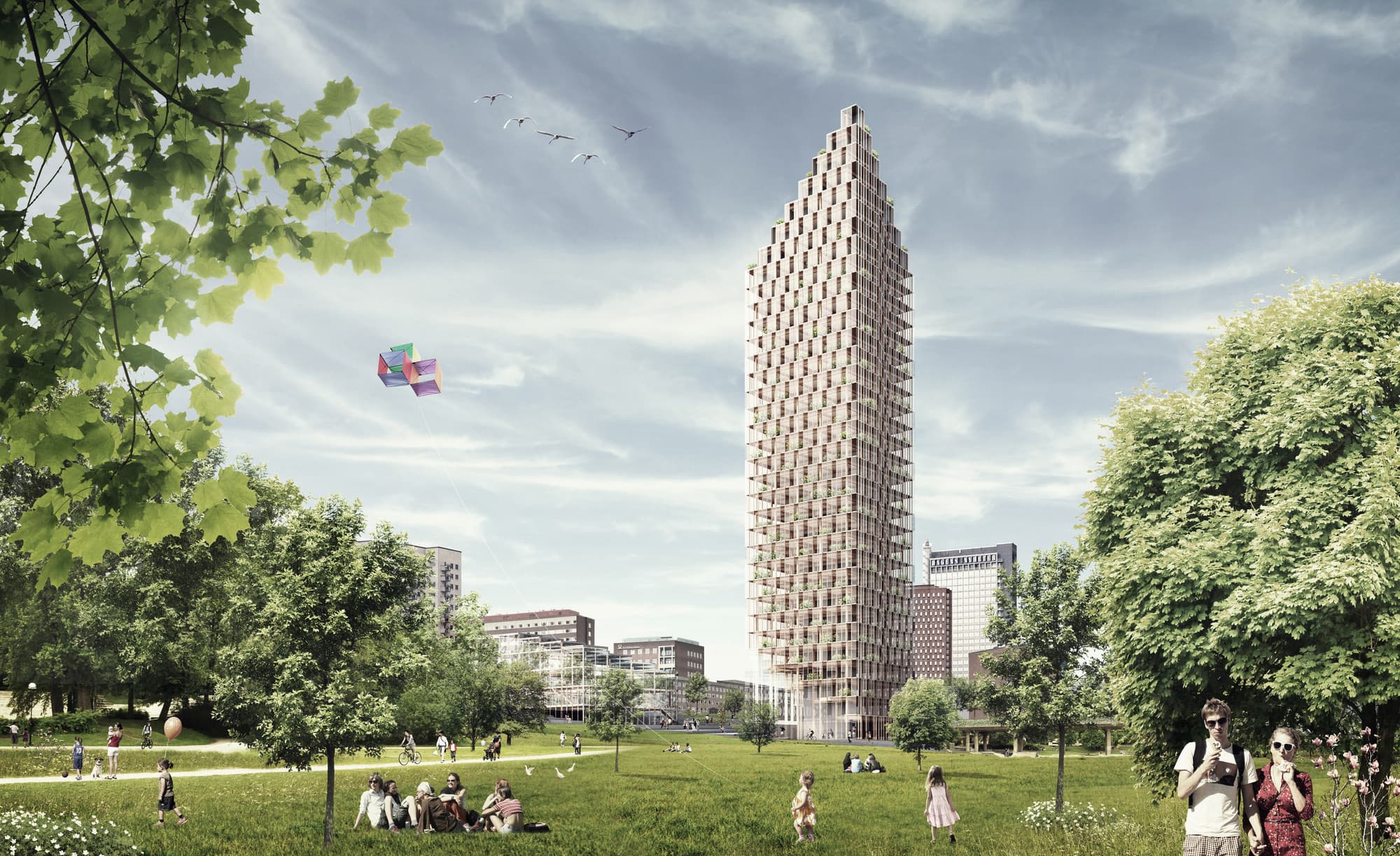
Above: CLT towers are rising across the globe (image courtesy of CF Moller).
CLT uptake and use was initially driven by its sustainability credentials. However, in recent times, a resurgent construction market that is putting pressure
on supplies of traditional materials, and increased awareness has bolstered adoption.
While early CLT buildings were predominantly small low-rise structures, the material is increasingly being considered for taller schemes. Since Waugh Thistleton built the first timber skyscraper, or "plyscraper" in 2009, tall timber buildings have been planned around the world. In the past five years, towers of 30 metres, constructed from CLT, have risen in Australia, America and Europe.
This video was kindly powered by Viewpoint.
Images courtesy of Stora Enso, Ema Peter, Jack Hothouse, Waugh Thistleton, FP Innovations, Will Pryce and ETH Zurich. Footage courtesy of Stora Enso. We welcome you sharing our content to inspire others, but please be nice and play by our rules.








